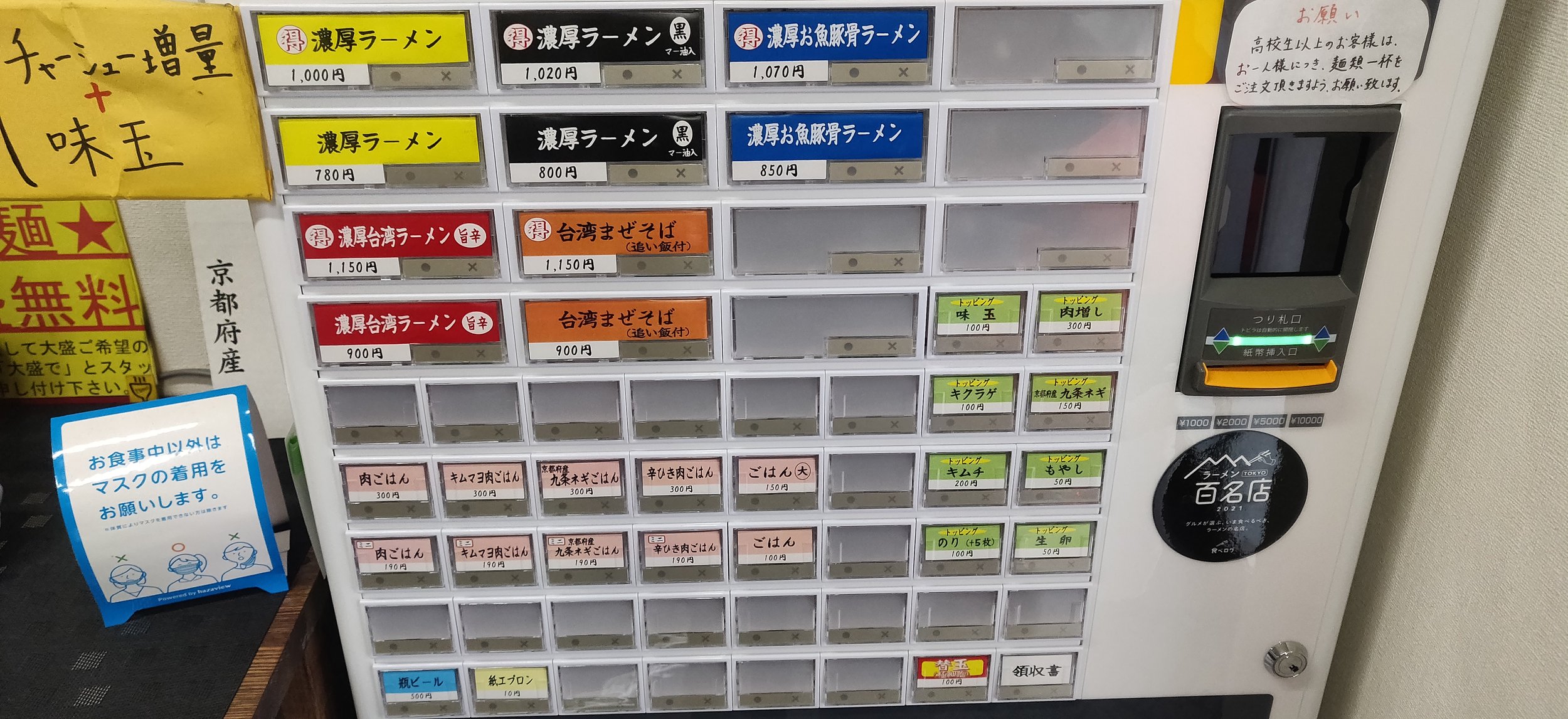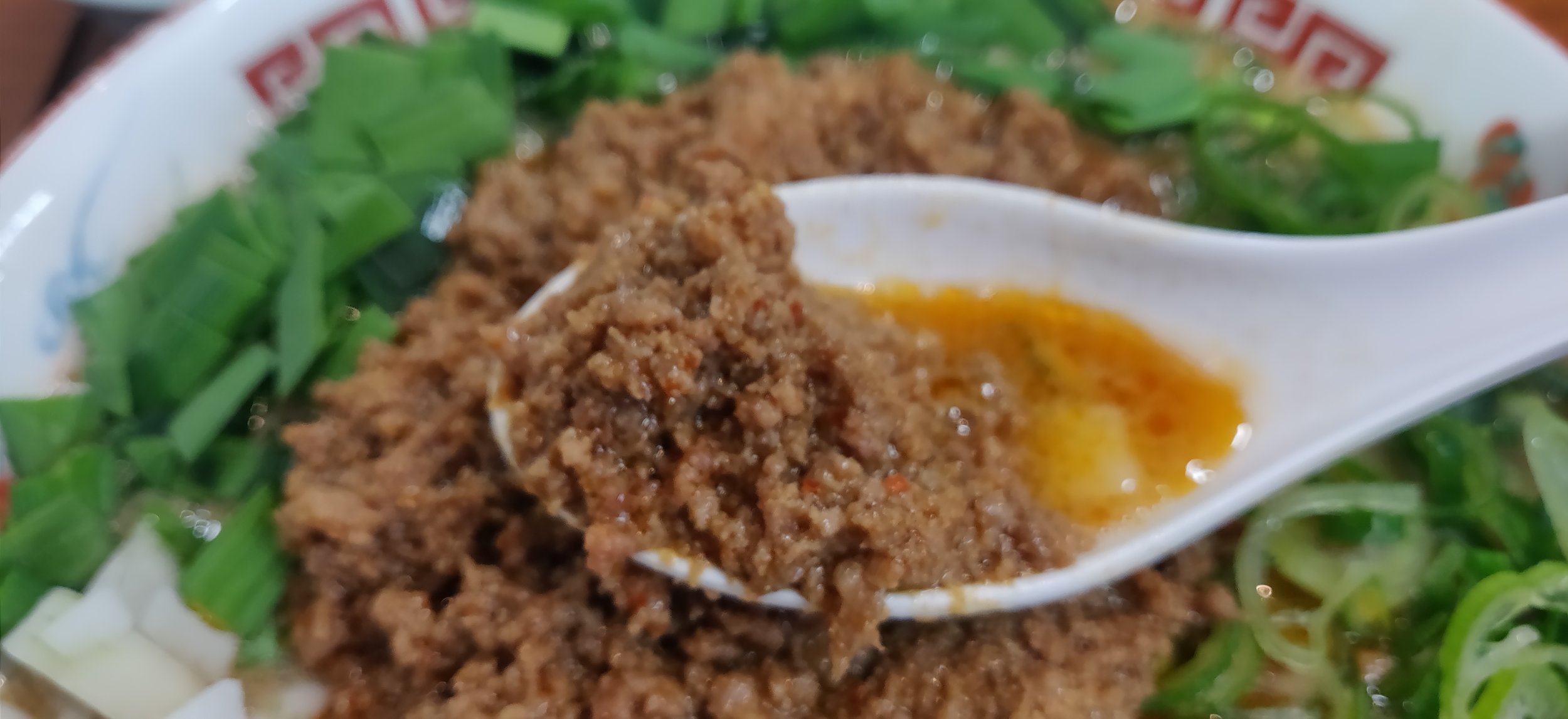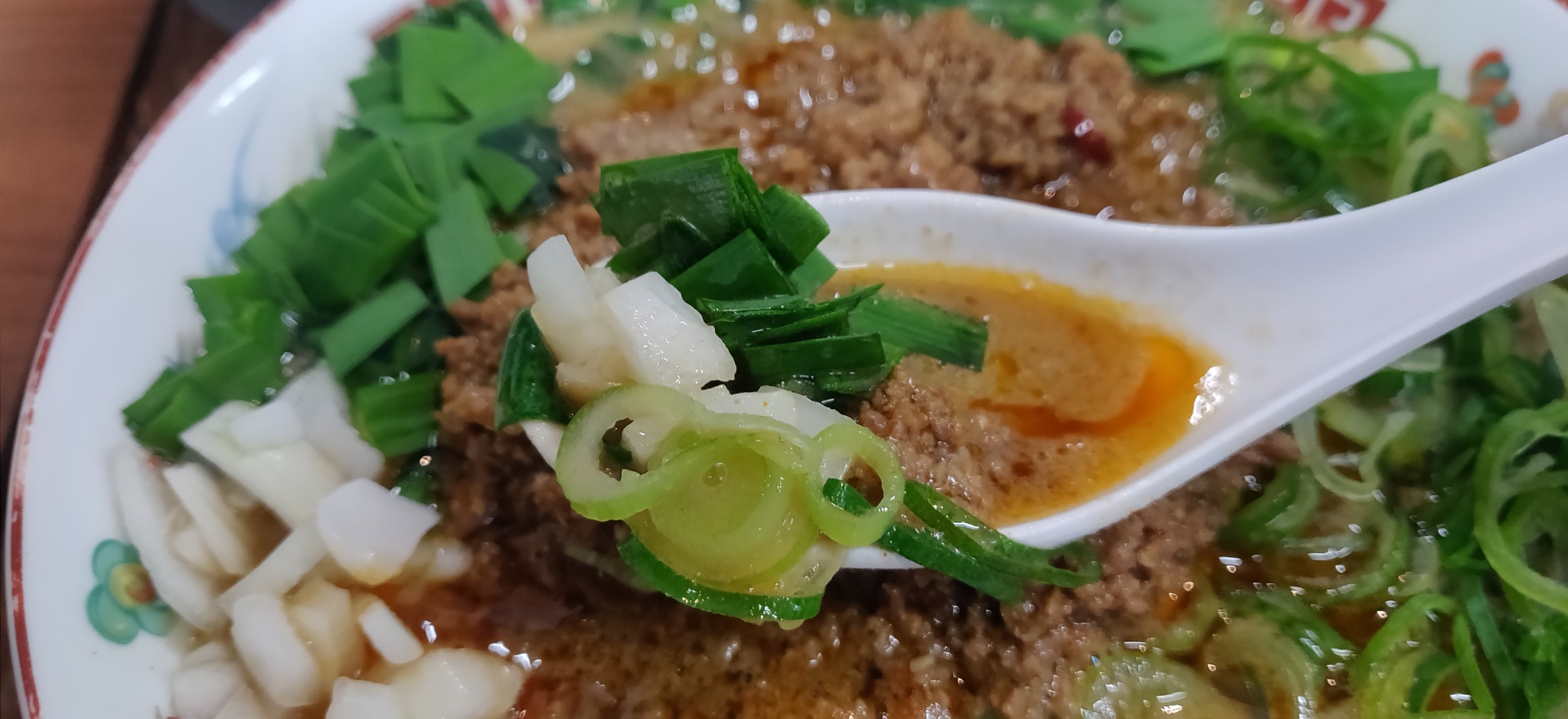Noukou Ramen Kanaya (濃厚ラーメン かなや): New Wave Taiwan Ramen?; Honancho, Tokyo
Taiwan Ramen, despite it’s name, is actually not a ramen style originating from Taiwan. Shocking, I know, but the story behind it is actually quite interesting and plays a pretty big role in modern day ramen culture. Back in the 70s Chef Kuo Ming You, a Taiwanese immigrant working as a chef in Nagoya, was determined to make the next trending dish in Japan. Drawing from his background, Chef Kuo decided to make Ta-a-men, a traditional Taiwanese soup and noodle dish which uses a primarily shrimp based stock. However, Chef Kuo soon realized that making the exact recipe from his childhood might not translate to the residents of Nagoya so he changed it up to help familiarize the flavors to the Japanese palette. Knowing Japanese people in Nagoya loved spicy food, he decided to sauté the minced pork topping with chili peppers in sesame oil. Of course this was a hit and the Taiwan Ramen was born…and in extension, the rise in popularity of his restaurant Misen, now a Nagoya staple with locations all over Japan.
Since Misen’s rise in popularity with their “Taiwan Ramen”, many restaurants tried making their own rendition and following in the Misen success blueprint. As Misen is primarily a Chinese restaurant, the obvious transition was for ramen shops to take a hold of this concept, tinkering with the idea while using their own ramen as base. For the most part, ramen shops were still essentially copying Misen, adding the spicy pork mince as topping for their bowls, but in comes the rise of Abura Soba, a soup less ramen, which has risen in popularity in the past few years. With takeout ramen in demand, soup-less ramen took over the industry in full force, allowing customers to enjoy noodles without it getting soggy sitting in lukewarm soup. Taiwan Ramen’s intense flavor profile worked perfectly with the Abura Soba since the main characteristic was the topping which easily transitioned on to non soup ramen options and a second wave of Taiwan Ramen popularity swept Japan.
Well in comes Kanaya, which opened back in 2018, making a name for themselves as one of the best shops in Tokyo after incorporating their own twist to this popular Nagoya dish. At it’s core Kanaya is a rich, pork soup based ramen shop, but taking a glance at their Tabelog or RamenDB page, you may have thought they specialized in the Taiwan Ramen. The dish is by far their most popular menu item and they offer the style both with soup and without. Unfortunately no English on the menu so I’ll translate it here below. Top row is the Tokusei, or extra topping versions of the Noukou Ramen (regular thick pork bone soup), Noukou Ramen Black (with a mayu garlic oil), and the Noukou Osakana Tonkotsu Ramen (fish and pork bone soup). Second row is the regular options with no extra toppings. Third row is the Tokusei version of the Noukou Taiwan Ramen and Taiwan Maze Soba (no soup) while the row below is the non extra topping version. Pink buttons on the bottom is the rice dishes starting with the Niku Gohan (chashu over rice), Kimchee Mayo Niku Gohan, Kujo Negi Gohan (Kyoto green onions), Kara Hiki Niku Gohan (spicy pork mince), and just plain rice. Next row is a smaller version of the above options. Green buttons on the right is the add on toppings with the first column starting with Ajitama egg, Kikurage wood ear mushrooms, Kimchee, and Nori dried seaweed. Second column on the right starts with extra pork chashu, Kujo Negi, bean sprouts, and raw egg. Order for the day was the Noukou Taiwan Ramen which seemed to be the favorite among regulars and a side of plain rice.
Immediately after taking my first sip, I understood why this is such a popular menu item. Typically with Taiwan Ramen, the soup is more oily than it is rich and that’s sort of where that Chinese influence kicks in. It’s still very flavorful from the chili peppers and herbs, but it relies way more on those aromatics than the stock base itself. Well Kanaya decided the soup also needs flavor and opted to use their ultra rich, creamy tonkotsu broth as the base. Great decision though because the Do-tonkotsu (ramen slang for extra porky) stock, while incredibly deep and rich, has a sort of steady, one note flavor to it. The addition of the ‘Taiwan’ minced pork provides the extra chord of flavor and really gives the ramen a new rhythm. I love how the spice blends in to the stock and helps warm you both in terms of heat from the stock and spiciness of the toppings. I ended up having this bowl during the coldest day in December and it was honestly the perfect dish to get me through the rest of the day.
Some may quickly just toss this in with Tantanmen, but since it doesn’t use Szechuan peppercorns or cilantro, it has a pretty unique, different flavor profile that you definitely have to try yourself. As you can see from the photo, the red seeps from the minced pork in to the soup and its mostly a sort of Ra-yu, or chili infused sesame oil. It doesn’t pack a ton of heat, but the roasted chili aroma permeates throughout the entire soup and makes for an incredibly satisfying pairing. And as opposed to the Tantanmen, not a whole lot of aromatics besides the toppings so it really just relies on the natural deliciousness of the pork.
Speaking of which we can’t forget the Nira, or garlic chives, another staple in all Taiwan Ramen. In my opinion the Nira really rounds out the heaviness of the bowl providing a crisp crunch and refreshing earthy notes to help cut through the richness of the soup. White onions have a similar effect with it’s sharpness mellows out the intensity of the spice in-between sips. I thought the green onions was a nice touch to add a bit of sweetness as well, but it is a bit unfortunate to feature this Kujo Negi, a Kyoto specialty, in such an intense flavor profile. I felt like I wasn’t able to fully appreciate what the Kujo Negi, which is an amazing negi variety, has to offer so a less forward green onions could have done the same job. Even with all these extra bits and bobs, the ramen is still a bit intense for you, you can order some other toppings which might help calm it down a bit. My suggestion would be the raw egg which will add some creaminess to the bowl and smooth out some of the rough, spicy edges.
Finally, in order to withstand the intensity of the soup, you have to pair it with a confident noodle and Kanaya did just that showcasing these beautiful thick strands for their ramen. I loved how chewy these noodles were, but still have the sort of malleability which allows them to soak up the soup for a balanced slurp. I wouldn’t go as far as to say they were Jiro-kei, but they do have a similar thickness to them which works really well here. And if you’re feeling extra peckish, be sure to grab a side of rice which is incredible when dumped in to your remaining soup to make an end of meal porridge. Definitely give it a try if you have the stomach space because there is no way you’ll be able to replicate this flavor at home (I’ve tried).
Honancho is a bit of an inconvenient stop for many, but if you have the chance, I definitely recommend making a visit and trying out the shops this area has to offer. There are a ton of options with this being a great option for the hearty spice lovers out there. If you do end up making a visit, please let me know in the comment section below! Would love to hear what you thought as well and let me know if there’s a shop nearby you would recommend to me. Cheers!






